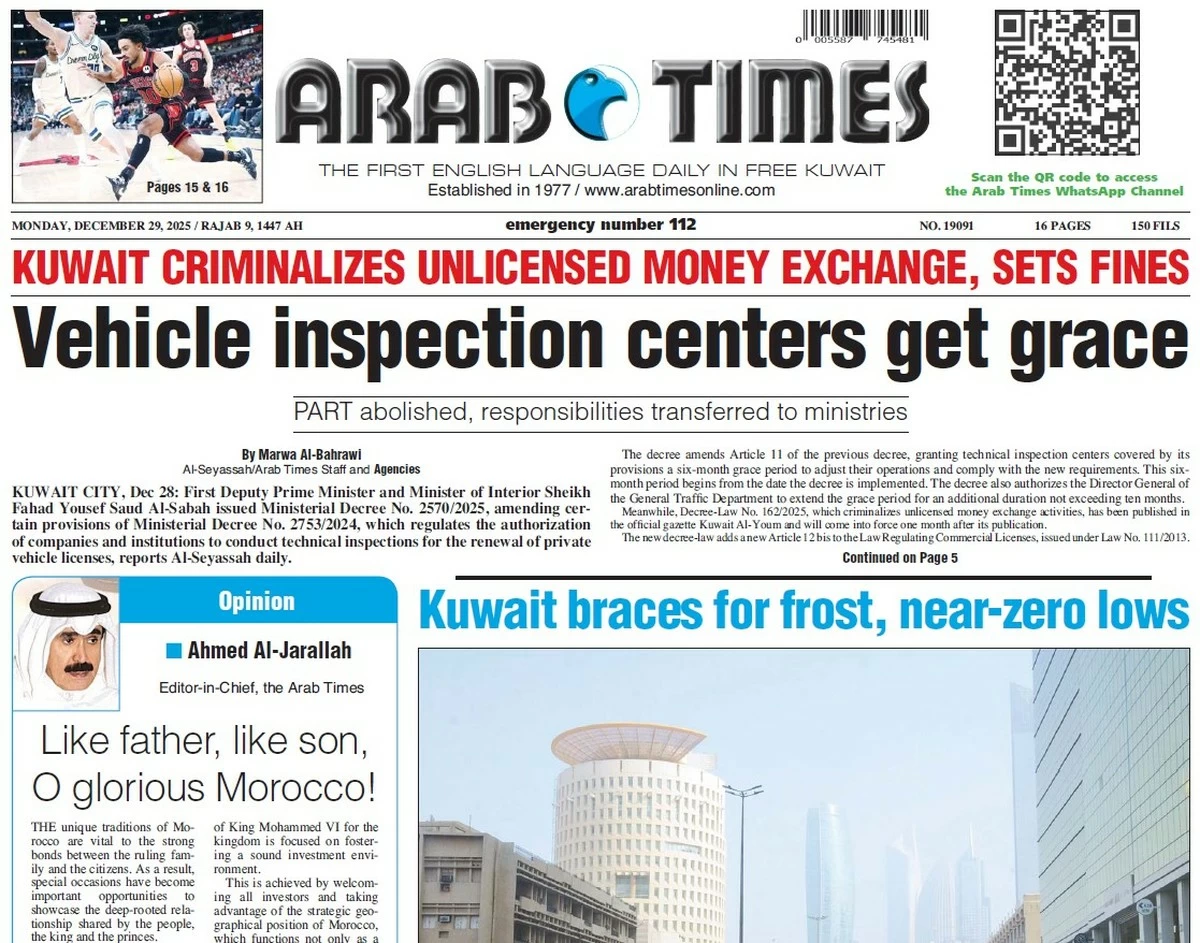27/05/2023
27/05/2023
Reasonable recovery of MENA capital flows seen
KUWAIT CITY, May 27: The Economist Intelligence Unit (EIU) stated in a recent analysis that the Middle East and North Africa (MENA) region recorded a strong performance in 2022 in terms of attracting foreign direct investment (FDI), expecting the recovery of capital flows to the region to be reasonable in 2023 and 2024, reports Al-Rai daily. The unit believes the macroeconomic background will be supportive of FDI flows for most of the region’s economies, and suggested that more than half of the region’s countries will record average economic growth rates higher than 3 percent during the same period.
The unit expects Kuwait to record the lowest economic growth in the Gulf during this year and the following years, as the figures issued by the “Economist Intelligence” indicate that the average real Kuwait GDP growth will reach 1.9 percent during this period, while the UAE will record the highest rate for the same period by 4 percent followed by Qatar 3.7 percent, then Bahrain 3.5 percent, then Oman 3 percent, then Saudi Arabia 2.4 percent
Rates
Moreover, most countries in the region, particularly the Gulf states, will continue to enjoy low inflation rates and stable exchange rates, which encourages the investment climate. However, the unit excluded from this two major economies, Egypt and Turkey, which are expected to suffer from the weakness of their currencies and severe price pressures in 2023, while this applies to crisis countries such as Lebanon, Iran, Sudan, Syria and Yemen. In this context, the unit suggested that Kuwait would record the second highest inflation rate in the Gulf, after the UAE, over the average period of 2023, pointing out that the oil and gas industries in the countries of the region received a major investment injection in 2022, and the future prospects appear promising in terms of foreign direct investment flows to oil and gas sectors.
Although global oil prices continue to decline from their 2022 levels, according to the unit, this constitutes a modest decline, indicating that prices will remain reasonably high, to above $80 a barrel in 2023 and about $77 next year. It also expected that high prices and high revenues driven by the recovery of demand, especially from Europe and Asia, would attract additional inflows of foreign direct investment, which would lead to improving productivity in existing facilities and putting new sites into service. With regard to Saudi Arabia, the unit pointed out that the Kingdom intends to increase its oil production capacity to 13.2 million barrels per day by 2027 from its current level of 12.2 million, while the UAE intends to increase its production capacity to 5 million barrels per day from the 4.2 million it produces at present.
To the contrary, the unit indicated that Iran, which possesses huge oil reserves in addition to the largest reserves of natural gas in the region, will face, due to the international sanctions imposed on it, difficulty in the short and medium term in attracting foreign direct investments to develop its capabilities to export crude and refined oil, natural gas and liquefied natural gas. The unit indicated that Qatar has consolidated its position as one of the largest exporters of liquefied natural gas, and, driven by foreign direct investment, has embarked on a massive expansion of its capacity to produce and export LNG, and to better serve its customers in Asia and Europe.
On the other hand, The Economist Intelligence reported that the Gulf states and other energy-exporting countries in the region reaped huge financial revenues from their oil and gas sales and expects this situation to continue in the short and medium term, as money will continue to be pumped into national development projects that will attract global partners and foreign investments, noting that the historical obstacles in the way of foreign direct investments will continue in some countries in the region and will crystallize in some cases by 2023.


